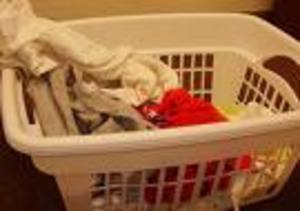Are you one of the many Americans who are concerned about the quality and safety of their drinking water? Have you just been advised to boil your water before bathing or drinking it? If this is the case, do you know how to properly treat your water at home to ensure that it is as safe as possible?
The Water Quality Association performed a survey that found 75% of Americans have concerns about the quality of their water at home. Half of those surveyed were worried about contaminants in their water. Such high numbers are undoubtedly related to research regarding nitrates in well water. Also, scientific data has proven that even the tiniest contaminants in the drinking water may lead to cancer and heart disease.
With the numerous natural disasters that have occurred in recent years, people have begun to educate themselves on preparedness for an emergency. One essential aspect of survival during an emergency is safe drinking water. One easy way to prepare for an emergency is to keep several gallons of safe, clean bottled water on hand.
If you are in a situation where you cannot access safe drinking water or run out of your supply, here are some alternatives to help ensure your safety and good health. First, you must be able to decide if your water is safe for drinking or bathing. Even water used for cooking should be treated. If you are even slightly unsure about the purity of the water, treat it. Water that contains contaminants such as bacteria can cause serious illness, for example, typhoid or hepatitis.
Although these methods are not 100% perfect to eliminate all contaminants, most microbes will be removed. Treating your water with more than one method will increase the effectiveness. Salts and heavy metal contaminants will not be removed.
Place water in a large container to allow the particles suspended in the water, time to fall to the bottom of the container. Another method to remove such particles is to strain the water. Using a clean cloth or several paper towels, pour the water from one container to another allowing it to flow through the cloth or paper towels. This step will remove a large portion of the sediment.
The best way to treat your water is by boiling it. You will want to boil the water for five minutes. A steady boil is necessary. Of course, allow time for the water to cool before you drink it or use it for bathing to avoid burns.
Pour the boiled water between two containers. Be certain the containers are clean. The act of pouring the water from one container to the next will add oxygen to the water. This will improve the taste.
Standard household bleach is a great way to disinfect your water. Bleach containing 5.25% sodium hypo chlorite will kill microbes. It takes about 16 drops of bleach for each gallon of water. The water should stand for a half hour before using. Check the water before use to see if you can detect a slight bleach smell. If no smell is detected, add another sixteen drops per gallon. Check the water again in about 15 minutes to see if the slight bleach odor is noticed.
Distilled water is safer than the water resulting from the methods mentioned above. You can distill water at home. Distillation will get rid of many of the microbes that may survive the above processes. Even some chemicals, heavy metals, and salts can be removed with distillation.
Simply boiling the water as described above will not result in distilled water. To properly distill water, you must boil the water and then gather the water vapor that has condensed back into water. The water that results will be free from most contaminants.
To make your own distilled water at home, you will need a large pot with lid and a cup. Fill the pot about ½ full of water. Attach a cup to the handle of the lid. Place the lid upside down on the pot. Do not allow the cup to touch the water.
Now that you have the set up for distillation, boil the water. You will want to boil it for approximately 20 minutes. The boiling water will create vapors that condense and be collected into the cup. The cup will contain your distilled water.
In the event of a boil advisory or emergency, these methods can make your water safer. Straining, distillation, and chlorination are excellent ways to treat water that you may use for drinking, cooking, and bathing. Try these methods at home before you need them to become accustomed to the processes involved.
These simple processes to treat water can keep you and your family safe in the event of an emergency.




